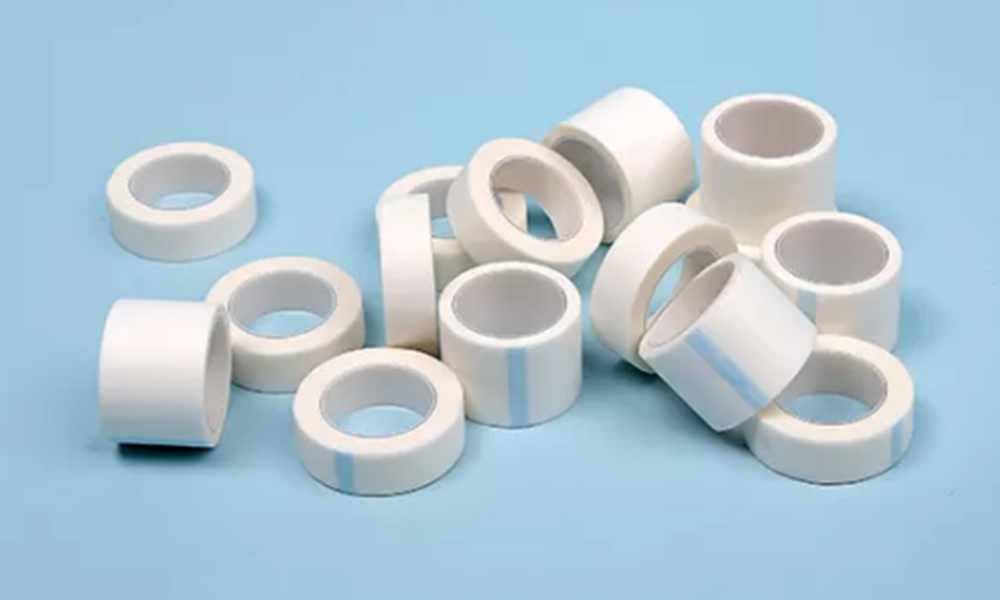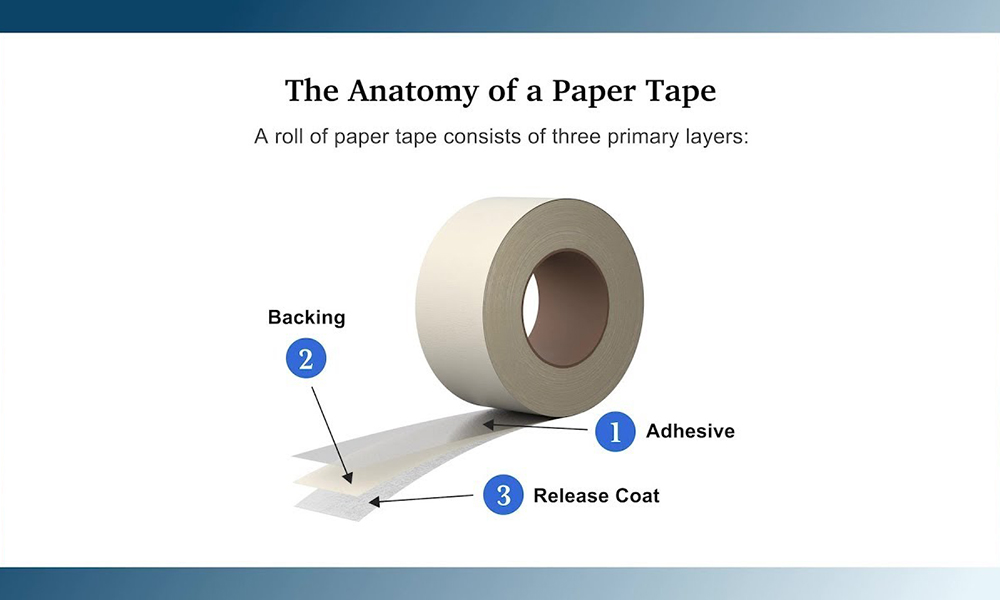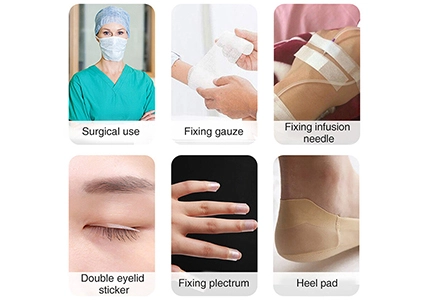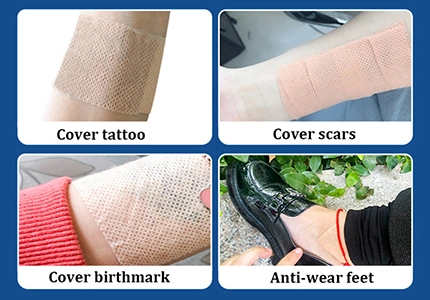WILLCOME Medical tape is a type of adhesive tape that is used in the healthcare field to hold dressings and other medical devices in place. It is designed to ensure that various medical items are securely fastened without compromising comfort or functionality. Medical tapes come in various sizes, shapes, and types, ranging from paper to plastic to cloth. They are made with hypoallergenic or gentle adhesive, which is less irritating to the skin, making it ideal for patients with sensitive skin. Medical tapes are used in a wide variety of applications, including securing IV lines, covering incisions following surgery, holding bandages in place, and securing tube connectors. Medical tape is an important tool in many different medical settings, from hospitals to clinics to doctor's offices and nursing home etc.



Hypoallergenic: Medical tapes are typically made with hypoallergenic adhesive to minimize the risk of skin irritation or allergic reactions, making them suitable for use on patients with sensitive skin.
Breathable: Many medical tapes are designed to be breathable to allow air to flow through the tape and the skin. This feature helps reduce the risk of moisture buildup, which can lead to skin maceration (softening or breakdown of the skin).
Gentle on Skin: Medical tapes are formulated to be gentle on the skin, even during extended wear. They should adhere securely without causing trauma or damage when removed.
Adhesive Strength: Medical tapes come in various adhesive strengths, ranging from gentle to strong. The choice of tape depends on the application and the required adhesion level.
Conformable: Medical tapes should be flexible and conformable to the contours of the body. This ensures that the tape adheres securely, even on curved or moving body parts.
Easy to Tear: Many medical tapes are designed to be easily torn by hand, eliminating the need for scissors or other cutting tools during application.
Water-Resistant or Waterproof: Some medical tapes are formulated to be water-resistant or waterproof, making them suitable for use in wet or moist environments, or when the tape may come into contact with water or sweat.
Transparent or Color Options: Medical tapes come in various colors and may be transparent or semi-transparent. Transparent tapes allow for easy monitoring of the skin or wound beneath the tape.
Radiolucent: Certain medical tapes are radiolucent, meaning they do not interfere with X-ray or imaging procedures, allowing for clear imaging of the area under the tape.
Latex-Free: Many medical tapes are latex-free to accommodate individuals with latex allergies or sensitivities.
Durability: Medical tapes are designed to maintain adhesion even in challenging conditions, such as humidity, temperature changes, or when exposed to bodily fluids.
Gentle Removal: The adhesive used in medical tapes should allow for easy and painless removal without causing damage to the skin.
Sterility (for Some Applications): In sterile medical procedures, medical tapes may be available in individually wrapped, sterile packaging to maintain a sterile field.
Variety of Widths and Lengths: Medical tapes come in different widths and lengths to accommodate various medical applications, from securing small dressings to immobilizing limbs.
Compliance with Standards: High-quality medical tapes adhere to relevant regulatory and safety standards, such as those set by the FDA and ASTM International.
| Material | gauze bandage with medical adhesive. |
| Medical glue | high quality medical glue, can be latex or latex free. |
| Colors | white or customized. |
| Adhesive properties | >1.6N/inch testing strip. |
| It has astringent and moisturizing effect, suitable for skin cracks, cracking hands and feet, playing the fingers and fixing the movement. Cotton substrate, good ventilation. | |
| Made by non-woven fabric, breathable and tearing off easily. | |
| Medical Glue | high quality medical glue, can be latex or latex free. |

The choice of medical tape material depends on the specific application and patient needs. It is essential to select the appropriate type of tape to ensure secure adhesion, comfort, and minimal skin irritation.
Paper: Paper medical tape features a paper backing coated with a hypoallergenic adhesive. It is lightweight, breathable, and suitable for securing dressings and lightweight bandages. It is gentle on the skin and can be easily torn by hand, making it convenient for quick applications.
Cloth: Cloth or fabric medical tape has a fabric backing, often made from materials like cotton or polyester. It is durable, flexible, and conformable, making it ideal for applications where the tape needs to adhere to curved or moving body parts. Cloth tape is often used in sports medicine and for securing heavier dressings or bandages.
Foam: Foam medical tape has a foam-like backing that provides cushioning and padding. It is commonly used in wound care and for securing medical devices where additional padding and protection are required.
Plastic: Plastic medical tape is made with a plastic backing, such as polyethylene or polyurethane. It is transparent, water-resistant, and suitable for securing intravenous (IV) catheters, tubing, and other medical devices. Plastic tape is often used when visibility of the insertion site or dressing is important.
Silicone: Silicone medical tape features a silicone-based adhesive that is gentle on the skin and minimizes trauma when removed. It is commonly used for sensitive or fragile skin, such as in neonatal care or when securing medical devices to elderly patients.
Hydrocolloid: Hydrocolloid medical tape is made from a hydrocolloid material that forms a gel when in contact with wound exudate. It is used for wound dressings and can help create a moist wound environment conducive to healing.

Wound Dressing, IV and Catheter Securement, Ostomy Care, Taping and Strapping, Dressing Retention, Stoma Care, EKG Electrode Placement, Wound Closure, Dental Applications, Emergency First Aid, Securement of Tubes and Lines, Pediatric Care, Laboratory and Research, Cosmetic and Aesthetic Procedures, Veterinary Medicine, Tattoo and Body Piercing Studios.

Hospital, Clinic, Nursing Home
